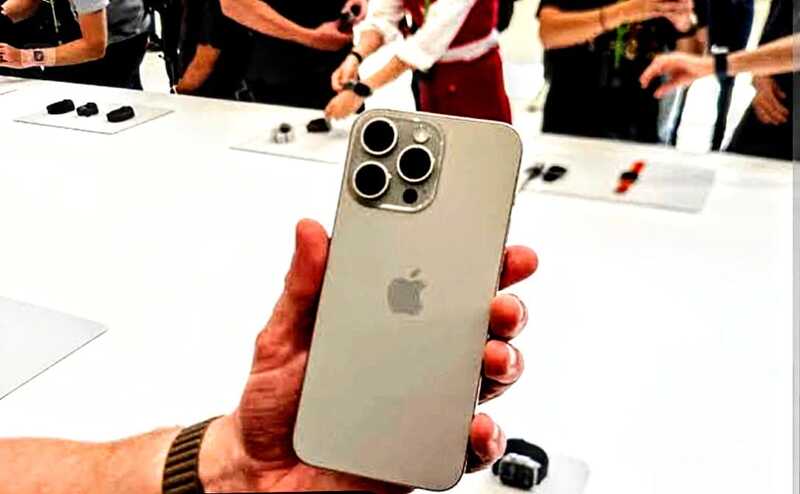 An Apple Iphone 15 Pro being displayed to customers. Photo Credits: Mobil via Facebook
An Apple Iphone 15 Pro being displayed to customers. Photo Credits: Mobil via Facebook
Apple Unveils I Phone 16: Redefining Innovation In The Smartphone Market
NorthAmerica
Technology
Apple officially released the iPhone 16 series, an update to the iPhone 15 lineup from September 2023. The new series includes four models:
- iPhone 16
- iPhone 16 Plus
- iPhone 16 Pro
- iPhone 16 Pro Max
The standard iPhone 16 features a 6.1-inch OLED display, powered by Apple’s latest A18 processor, and comes with an improved dual-camera system and a new dedicated side button for photography. It also boasts better battery performance compared to its predecessor.
Manufactured in India, Rolled Out Globally
The iPhone 16 is manufactured in India, aligning with Apple's strategy to diversify production outside of China. Global availability for the iPhone 16 Plus, Pro, and Pro Max starts on Friday, September 27, in Macao, Vietnam, and 19 other countries and regions.
Hardware and Performance Upgrades in comparison:
- iPhone 15 featured an A16 Bionic chip with a 5-core GPU, dual cameras (48MP main and 2x telephoto ultra-wide), and up to 26 hours of video playback.
- iPhone 15 Plus used the A17 Pro chip with a 6-core GPU, a Pro-level camera system with 3x or 5x telephoto, and up to 29 hours of playback.
- The iPhone 16’s performance leap is mainly attributed to the A18 chip and camera optimization, but some users argue that true innovation remains limited.
Market Response: A Lukewarm Launch
Despite the upgrades, early sales of the iPhone 16 have underwhelmed. Only 37 million units were sold during the first weekend — a 13% drop from the iPhone 15 launch figures. According to Apple analyst Ming-Chi Kuo, pre-orders for iPhone 16 Pro and Pro Max have been lower than expected, particularly in the U.S. and other major markets.
Missing Features and Delayed AI Rollout
A major reason cited for the muted response is the absence of Apple Intelligence (AI) features, which are not expected until October 2024. Many consumers anticipated more advanced AI capabilities at launch, especially as rival companies are aggressively integrating AI into their devices.
China and Global Rivals Intensify Pressure
China’s tech advancement — especially from Huawei — has played a major role in reducing the iPhone 16’s appeal. Huawei’s tri-fold Mate XT, which launched around the same time, has created a buzz that’s overshadowed Apple in its own key markets.
Other competitors like Samsung and Google are also pushing boundaries in foldable phones, AI integration, and hardware design, causing some loyal Apple users to question the company's innovation leadership.
Calls for a Strategic Reset
A growing segment of iPhone users is urging Apple to rethink its release cycle. There’s increasing criticism that annual updates are offering incremental changes rather than revolutionary upgrades. Many feel Apple should pause, innovate, and surprise rather than following a predictable launch schedule.
Apple at a Crossroads
While the iPhone 16 continues to deliver premium design and dependable performance, it lands at a time when consumer expectations are shifting rapidly. With intensifying global competition, demand for deeper innovation, and emerging technologies like AI, Apple may need to recalibrate its strategy to retain dominance in the smartphone arena.
Senior Editor: Kenneth Njoroge
Financial Expert/Bsc. Commerce/CPA